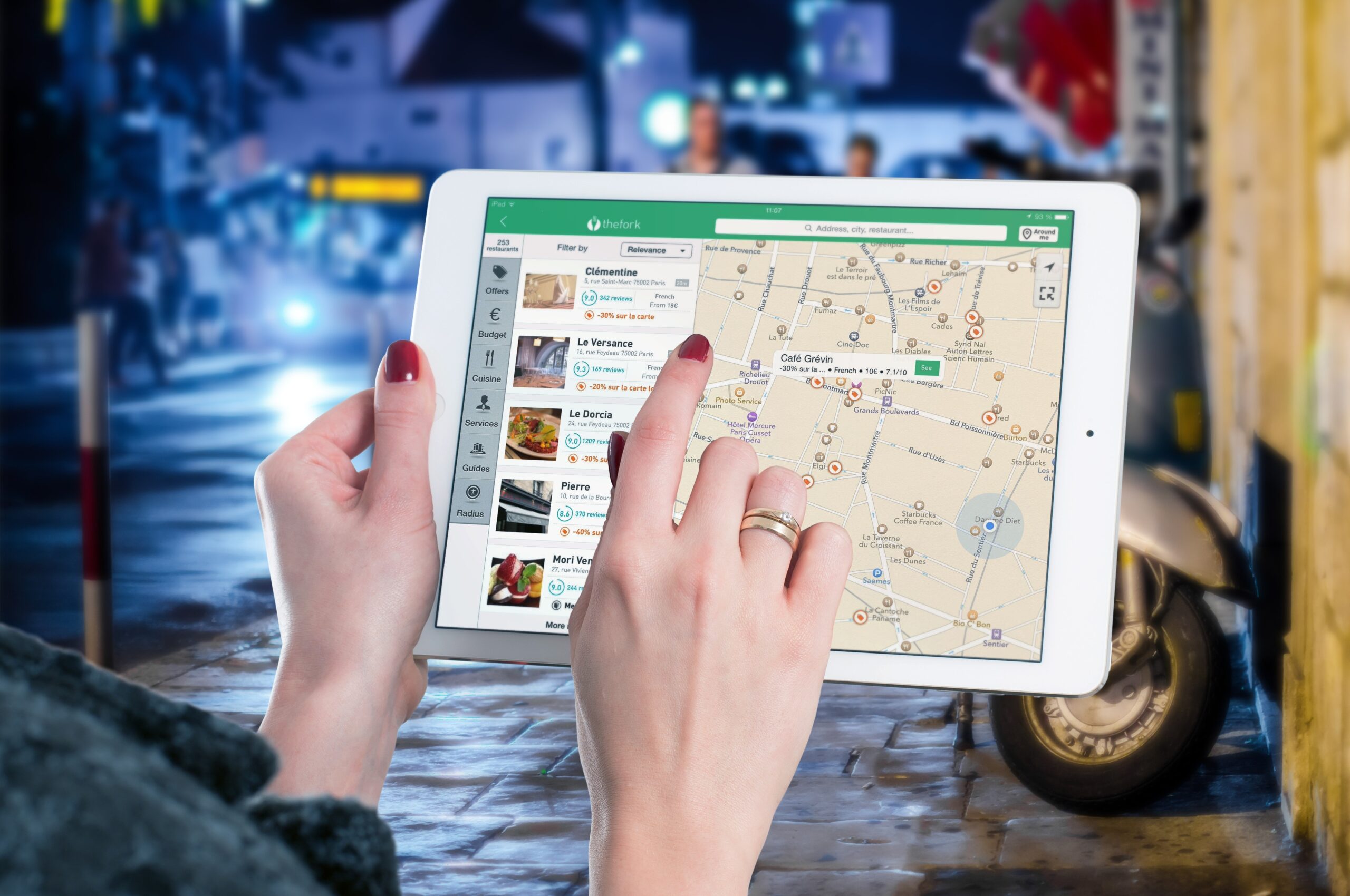The power of a well-structured franchisee referral program was another crucial point. By engaging and incentivizing current franchisees, franchisors can unlock a valuable source of credible leads. This approach brings in new prospects and reinforces the franchisor-franchisee relationship.
Unlocking the Secrets of Lead Generation for Franchise Sales
By Gary Occhiogrosso – Founder and Managing Partner, Franchise Growth Solutions
Introduction
In the competitive world of franchising, the art of generating quality leads stands as a cornerstone for success. For franchisors, expanding their brand footprint hinges on their ability to attract, engage, and convert potential franchisees. This necessity brings to the fore the pivotal role of effective lead-generation strategies. However, the process is not so straightforward. The landscape of franchise sales is marked by its unique challenges, often making the path to successful lead generation a complex and nuanced endeavor.
One of the primary challenges franchisors face is the sheer diversity of the franchise market. Potential franchisees come from varied backgrounds, possess different levels of business experience, and have unique motivations for entering the franchise world. This diversity necessitates a tailored approach to lead generation, where one-size-fits-all strategies are less likely to yield results. Moreover, the increasing competition in the franchise industry means franchisors must identify potential leads and stand out among many other options available to entrepreneurs.
The evolving digital landscape has also transformed how leads are generated and nurtured. While digital platforms offer new avenues for reaching out to potential franchisees, they also require franchisors to be more tech-savvy and adept at online marketing tactics. Navigating these digital channels, from social media to search engine optimization, adds another complexity to the lead generation process.
Understanding the nuances of lead generation for franchise sales becomes crucial in this environment. It’s about striking the right balance between traditional methods and innovative digital strategies while maintaining a deep understanding of the target audience. This blog aims to delve into these intricacies, offering insights and strategies to help franchisors unlock the full potential of their lead generation efforts and pave the way for successful franchise expansion.
Building a Strong Brand Presence
In franchise sales, a strong brand presence is not just a bonus; it’s a necessity. The power of a well-established brand lies in its ability to instill confidence, convey reliability, and create an emotional connection with potential franchisees. A franchisor with a robust brand image is often perceived as a safer and more lucrative investment, thus attracting more qualified leads. But how does a franchisor build such a compelling brand presence?
The first step is understanding that brand building goes beyond logos and taglines. It encompasses the entire experience you promise to deliver through your franchise. This means consistently providing exceptional products or services, maintaining high standards, and nurturing a positive corporate culture. Such actions help create a brand that resonates with values and quality, making it attractive to prospective franchisees.
In today’s digital age, leveraging online platforms is crucial for brand building. Effective digital marketing can exponentially increase a brand’s reach and visibility. Strategies like search engine optimization (SEO) ensure that your franchise appears prominently in online searches, making it easier for potential leads to find you. Pay-per-click (PPC) advertising can also be a powerful tool, allowing you to place ads in front of a targeted audience actively searching for franchise opportunities.
Social media platforms offer a unique opportunity to build a community around your brand. Regularly posting engaging content, interacting with followers, and showcasing the successes of your existing franchisees can create a compelling narrative about your brand. This increases visibility and helps build a rapport with potential franchisees, giving them a glimpse into the supportive network they could be a part of.
Content marketing is another critical component in building brand awareness. Creating valuable and informative content – blog posts, whitepapers, or webinars – establishes your brand as a thought leader in the industry. This helps build trust and credibility, key factors potential franchisees consider when investing in a franchise.
Building a solid brand presence for franchise sales is more than just marketing; it’s about creating a compelling story that resonates with potential franchisees. By combining the power of digital marketing, social media engagement, and quality content, franchisors can effectively communicate their brand’s value proposition, thus attracting more qualified leads and paving the way for successful franchise expansion.
Leveraging Digital Marketing Strategies for Lead Generation
In the modern landscape of franchise sales, digital marketing strategies have emerged as critical tools for effective lead generation. The digital realm offers many opportunities to connect with potential franchisees, but it requires a strategic approach to harness its potential truly. The most effective digital strategies in this domain are search engine optimization (SEO), pay-per-click (PPC) advertising, and email marketing, each uniquely attracting and converting leads.
Search Engine Optimization (SEO):
SEO is crucial in ensuring your franchise’s website ranks high in search engine results, making it more visible to those searching for franchise opportunities. You can significantly increase organic traffic by optimizing your site with relevant keywords, quality content, and a structure that search engines favor. This involves using the right keywords and ensuring that your site provides valuable information, answers common queries, and presents a compelling case for your franchise. The goal of SEO is not just to attract traffic but to attract the right kind of traffic – potential franchisees actively seeking opportunities your brand offers.
Pay-Per-Click (PPC) Advertising:
While SEO focuses on organic search results, PPC advertising allows you to place ads in search engine results and other strategic online locations. PPC campaigns can be highly targeted, ensuring that your advertisements are displayed to individuals who have shown interest in owning a franchise or have searched for related terms. This level of targeting, combined with the ability to control budgets and track ROI, makes PPC an effective tool for generating high-quality leads. The key to successful PPC campaigns is crafting compelling ad copy and continuously optimizing based on performance data.
Email Marketing:
Email marketing remains a powerful tool in nurturing leads. By sending targeted, personalized messages to potential franchisees who have shown interest, you can keep them engaged with your brand. This might include newsletters, updates about your franchise, success stories from current franchisees, or invitations to webinars and events. The goal is to provide ongoing value, keeping your franchise in mind for when they are ready to decide. Effective email marketing is about building relationships, not just promotional content.
User-Friendly Website with Clear Calls to Action:
Your franchise’s website is at the heart of all these digital marketing efforts. It is the hub for your online presence and is often the first point of contact for potential franchisees. Therefore, it is essential that the website is user-friendly, easy to navigate, and provides comprehensive information about the franchise opportunity. Clear calls to action are crucial – they guide visitors toward the next step, whether filling out a contact form, downloading a franchise brochure, or signing up for a discovery day. The website should also be optimized for mobile devices, ensuring a seamless experience for users on all platforms.
Leveraging digital marketing strategies like SEO, PPC, and email marketing is essential in the modern franchise sales landscape. Combined with a well-designed, informative website, these tools can significantly enhance your ability to generate and nurture leads, ultimately leading to successful franchise expansion.
Franchise Networking and Partnerships
In franchise sales, networking and forming strategic partnerships cannot be overstated. These elements are crucial in expanding reach, enhancing brand visibility, and generating valuable leads. Franchise networking events, trade shows, expos, and partnerships with franchise business consultants and brokers form the pillars of a successful outreach strategy.
Networking Events, Trade Shows, and Franchise Expos:
Franchise networking events, trade shows, and expos are vital platforms for franchisors to showcase their brand to a targeted audience. These events are frequented by aspiring entrepreneurs, industry veterans, and potential investors, all gathered with a keen interest in exploring franchise opportunities. By participating in these events, franchisors can present their business models, share success stories, and directly engage with potential franchisees. These interactions aid in lead generation and provide insights into market trends and competitor strategies.
Moreover, trade shows and expos offer the unique advantage of face-to-face interactions, which can be more impactful than digital communication. Franchisors can use these occasions to build personal connections, answer real-time questions, and even conduct initial screenings of potential franchisees. The visibility gained at these events is often far-reaching, enhancing brand recognition and credibility in the industry.
Partnerships with Franchise Consultants and Brokers:
Partnerships with franchise business consultants and brokers can significantly widen a franchisor’s reach. These professionals match potential franchisees with suitable franchisors based on the candidates’ interests, investment capacity, and business goals. By collaborating with these experts, franchisors can tap into a pre-qualified pool of leads. Consultants and brokers bring leads and offer valuable insights into what potential franchisees are looking for, enabling franchisors to tailor their offerings and presentations accordingly.
These partnerships are especially beneficial for emerging or smaller franchisors needing more resources or brand recognition to attract leads independently. Consultants and brokers act as intermediaries who can vouch for the franchisor, adding a layer of trust and credibility. They also assist in navigating the complex process of franchise sales, from initial interest to final agreement, ensuring a smoother transaction for both parties.
Leveraging the power of networking events, trade shows, and expos and forming partnerships with franchise consultants and brokers are indispensable strategies for franchisors aiming to expand their network and generate quality leads. These approaches provide direct access to potential franchisees, offer opportunities for personal engagement, and open doors to a wealth of industry knowledge and expertise. For franchisors looking to grow their footprint, these channels provide a path to reaching suitable candidates and building fruitful, long-term relationships.
Utilizing Franchisee Referral Programs
In the franchise industry, leveraging the networks of existing franchisees through referral programs can be a highly effective strategy for generating new leads. Franchisees who are already integrated into the system and understand the business model can act as credible ambassadors for the brand. They often have extensive networks and can reach potential franchisees in ways that traditional marketing cannot. Implementing a referral program incentivizing current franchisees to refer quality leads can lead to fruitful outcomes.
The Role of Existing Franchisees in Lead Generation:
Franchisees are often well-placed to identify potential new franchisees. They understand the qualities and skills required to succeed, making them ideal to recommend suitable candidates. Additionally, referrals from existing franchisees come with a built-in level of trust and credibility. A recommendation from someone who has already invested in and succeeded with the franchise carries more weight than typical marketing efforts. This trust factor can significantly shorten the sales cycle, as referred leads are often more profound and prepared to commit.
Creating an Effective Referral Program:
To harness the potential of franchisee referrals, creating a program that is appealing and beneficial to current franchisees is essential. The program should offer incentives that motivate franchisees to seek out and refer potential leads actively. These incentives can be financial, such as a commission or bonus for each successful referral. Alternatively, non-monetary rewards like recognition, additional support, or exclusive benefits within the franchise network can also be effective.
It’s crucial to communicate the goals and details of the referral program to all franchisees. This includes outlining what constitutes a qualified lead, the referral process, and how and when rewards will be given. Transparency and simplicity are essential – the more accessible for franchisees to participate, the more likely they are to engage with the program.
Furthermore, providing franchisees with the necessary tools and resources to refer leads can enhance the program’s effectiveness. This might include marketing materials, business cards, or a simple online form for submitting referrals. Regular updates and feedback about the status of their referrals can also keep franchisees engaged and motivated.
Nurturing Franchisee Relationships:
Maintaining solid relationships with franchisees is vital beyond just setting up a referral program. A franchisee who feels valued and supported is likelier to speak positively about the franchise and actively participate in referral activities. Regular communication, support, and acknowledging their contributions to the franchise’s success can foster community and partnership. This positive environment aids lead generation and the franchise’s overall health and growth.
Remember, utilizing franchisee referral programs is a strategic approach to generating quality leads in the franchise industry. By engaging existing franchisees as brand advocates and providing them with the right incentives and support, franchisors can tap into a valuable source of potential franchisees. A well-structured and effectively managed referral program can be a win-win for both franchisors and their franchisees, leading to sustainable growth and expansion of the franchise network.
Following Up and Nurturing Franchise Leads
In the competitive landscape of franchise sales, the follow-up process is not just a step – it’s an essential strategy. Properly following up and nurturing leads can significantly impact the conversion rate of potential franchisees. It’s about maintaining engagement, building relationships, and guiding leads through decision-making. A systematic and thoughtful follow-up strategy ensures that interested parties maintain interest and feel supported.
Importance of Systematic Follow-Up:
The journey from initial inquiry to signing a franchise agreement is often lengthy and complex. Potential franchisees will likely explore multiple options and gather extensive information during this period. A systematic follow-up strategy ensures that your franchise stays at the forefront of their minds. Regular follow-ups demonstrate your interest and commitment to potential franchisees. It shows that you value their interest in your brand and are eager to address their needs and concerns. This consistent engagement helps build trust and confidence in your brand, which is crucial in a potential franchisee’s decision-making process. Remember; “Speed to Lead.”
Utilizing CRM Tools:
Customer Relationship Management (CRM) tools are invaluable in managing and optimizing the follow-up process. A good CRM system can track all interactions with leads, schedule follow-ups, and store detailed information about each potential franchisee’s interests and preferences. This information enables franchisors to tailor their communication and ensure that they address each lead’s specific concerns and questions. CRM tools also help segment leads based on investment readiness, location preference, and business experience, allowing for more targeted and effective follow-up strategies.
Personalized Communication:
Personalization plays a crucial role in nurturing relationships with potential franchisees. It involves going beyond generic messages and understanding each lead’s unique aspirations, concerns, and motivations. Personalized communication can be achieved by referring to previous conversations, tailoring information to their specific interests, and providing answers to their unique queries. This approach shows that you are attentive and invested in their individual journey, fostering a sense of connection and trust.
Moreover, the method of communication is as important as the message itself. While email is a common and effective tool, diversifying communication channels can be beneficial. Phone calls, video conferences, or even in-person meetings can add a personal touch to the interaction. Additionally, periodic newsletters, webinars, and invitations to franchise events can keep leads informed and engaged without the communication feeling overly sales-oriented.
A well-planned and executed follow-up strategy is essential in nurturing franchise leads. By utilizing CRM tools for organization and personalizing communication, franchisors can maintain engagement and build lasting relationships with potential franchisees. This approach not only increases the likelihood of converting leads into franchisees but also sets the stage for a robust and ongoing partnership.
Measuring and Analyzing Results in Franchise Lead Generation
In pursuing successful franchise lead generation, the significance of measuring and analyzing results cannot be overstated. It’s not enough to implement various strategies; understanding their effectiveness is critical to ensure efforts are well-intentioned and well-directed. Tracking and analyzing performance metrics enables franchisors to make informed decisions, refine their strategy, and ultimately increase the efficiency and effectiveness of their lead-generation efforts.
The Need for Performance Tracking:
Performance tracking in franchise lead generation involves more than counting the number of leads. It’s about understanding the quality of these leads, the conversion rate, and the return on investment (ROI) of different marketing strategies. By closely monitoring these aspects, franchisors can gain insights into which tactics are working and which are not. This information is vital in a landscape where time and money resources are precious, and every effort must contribute to tangible results.
One of the primary metrics to track is the lead conversion rate, which indicates the percentage of leads that turn into actual franchise agreements. This metric sheds light on the effectiveness of the initial lead-generation techniques and the follow-up and nurturing processes. Additionally, tracking the sources of leads (such as digital campaigns, referrals, or events) can help identify the most productive channels.
Utilizing Data and Metrics:
Modern CRM tools and analytics platforms are pivotal in gathering and analyzing data. They can provide detailed insights into lead behavior, preferences, and engagement patterns. For example, analyzing website traffic and user behavior can reveal the most effective content in attracting potential franchisees. Similarly, email campaign analytics can show which messages resonate best with the audience.
It’s also essential to analyze different marketing strategies’ cost-per-lead and overall ROI. This financial perspective ensures that the franchise is attracting leads and doing so cost-effectively. Understanding these financial metrics helps allocate budgets more effectively and can lead to more strategic investment in marketing efforts.
Refining Strategies Over Time:
The ultimate goal of tracking and analyzing lead generation efforts is continuously refining and improving strategies. This ongoing process requires a willingness to adapt and evolve tactics based on data-driven insights. It may involve shifting focus to more productive channels, tweaking messaging to better resonate with the target audience, or even reevaluating the ideal franchisee profile based on real-world data.
Regularly reviewing and analyzing these metrics encourages a culture of continuous improvement. It enables franchisors to stay agile, responsive to market changes, and aligned with potential franchisees’ evolving needs and behaviors.
Measuring and analyzing the results of franchise lead generation efforts is crucial for sustainable growth. It empowers franchisors to make data-driven decisions, optimize their strategies, and ultimately leads to a more efficient and effective process of attracting and converting high-quality franchise leads.
Conclusion: Mastering the Art of Franchise Lead Generation
As we conclude our exploration into franchise lead generation, we must reflect on the key insights and strategies discussed. Attracting and converting potential franchisees is multifaceted, requiring a blend of traditional tactics and modern digital approaches.
First and foremost, we delved into the critical role of building a solid brand presence. A robust and reputable brand attracts potential franchisees and instills confidence in them about the investment they are considering. Digital marketing, with its vast array of tools such as SEO, PPC advertising, and social media, stands as a pivotal component in amplifying brand visibility and reaching a wider audience.
I’ve also highlighted the immense value of networking events, trade shows, and expos, where personal interactions can lead to valuable connections and opportunities. Similarly, the potential of partnerships with franchise consultants and brokers was underscored, offering franchisors a way to extend their reach and tap into a network of pre-qualified leads.
The power of a well-structured franchisee referral program was another crucial point. By engaging and incentivizing current franchisees, franchisors can unlock a valuable source of credible leads. This approach brings in new prospects and reinforces the franchisor-franchisee relationship.
Moreover, the significance of a systematic follow-up strategy was discussed. Keeping leads engaged through personalized communication and regular updates is vital in nurturing these potential relationships. Utilizing CRM tools can aid immensely in this process, ensuring every lead is processed.
Lastly, the importance of measuring and analyzing the results of these lead-generation efforts must be addressed. By closely monitoring various metrics and performance indicators, franchisors can refine their strategies, making them more efficient and effective. This data-driven approach allows continuous improvement and adaptation in the ever-evolving franchise landscape.
Successful franchise lead generation is a dynamic and ongoing process. It demands a proactive and innovative approach, blending traditional methods with modern digital strategies. For franchisors aiming to expand their network and attract quality franchisees, it’s crucial to remain adaptable, data-informed, and focused on building solid and lasting relationships. The path to successful franchise expansion is paved with persistent and strategic efforts in lead generation, and those who master this art will find themselves at the forefront of franchise growth and success.
Elevate Your Franchise with Franchise Growth Solutions
As we wrap up our exploration into the intricate world of franchise lead generation, it’s clear that navigating this terrain requires a blend of expertise, strategic planning, and a deep understanding of the franchise landscape. For franchisors embarking on this journey, whether they are launching a new franchise or aiming to enhance their current franchise sales, the expertise of Franchise Growth Solutions can be a pivotal asset.
Franchise Growth Solutions positions itself as your outsourced Chief Development Officer, offering comprehensive services to ensure your franchise’s growth and success. Their team, backed by an extensive network of franchise executives, is committed to guiding you through the nuances of the franchise industry. From leveraging best practices to evaluating startup fees and creating benchmark business models, their goal is to bring clarity and strategic direction to your growth plans.
Their fully-developed franchise sales program is designed to help you find and land the best-fit franchisees. With a strategic lead generation and franchise sales plan, they aim to kickstart your journey towards building a prosperous franchise empire.
At the core of their philosophy is the commitment to being a long-term business partner for your franchise. Franchise Growth Solutions focuses on building lasting relationships, understanding that the franchise world often presents challenges that can be daunting for new and even experienced franchisors. They address these challenges by offering client-centered services that include a comprehensive examination of business practices, strategic growth programs, optimization of business functionalities, and training and coaching for your team. Their singular goal is to transform your business into a legacy, ensuring long-term success and sustainability.
For franchisors looking to elevate their franchise, contact Franchise Growth Solutions at www.franchisegrowthsolutions.com. Embrace the opportunity to work with a team deeply invested in your success and equipped with the expertise to help you navigate the complex world of franchise lead generation and growth.










